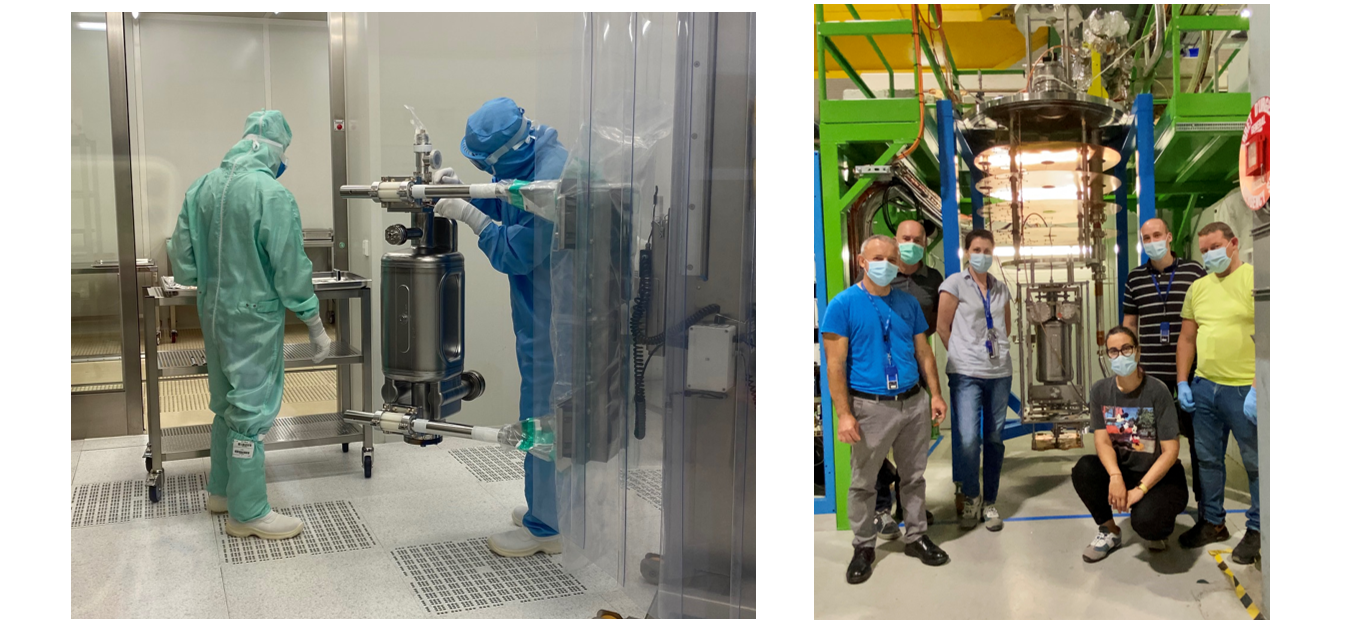The two RF dipole crab (RFD) cavities being prototyped for the SPS tests underwent an ultra-pure water rinsing for a period of approximately 7 hours at very high pressure of 100 bar. This process has proven to be a key step in the cavity preparation to reach extremely high fields and suppress electron field emitters which can eventually limit the performance reach. The cavity is closed with its RF ancillaries in an ISO4 environment to preserve the ultra-clean RF surface (see Figure 1). It is then installed into a special vertical cryostat in SM18 to cool the cavity surface to 2K, its nominal operating temperature.
Both RF dipole cavities reached performances well above the nominal target of 3.4 MV. RFD1 exceeded the nominal voltage by more than 50% and RFD2 reached a factor two above the target value (7 MV), setting a world record deflecting field in this frequency range. These performances were reproducible after the assembly and welding of the Helium tank owing to the careful preparation of the RF surface through the different steps of assembly and preparation.

Following the tests with Helium tanks, the cavities were equipped with the higher order mode couplers and the field antenna to undergo a final test at 2K before cryostating them into a two-cavity string.
The US-LARP built DQW cavity was sent to the FREIA test facility of Uppsala University (Sweden) and was successfully tested in their vertical cryostat. This test was the inaugural test of the vertical cryostat and the cavity performance reached close to the CERN results. Some minor installation issues on the vertical cryostat were found and repaired to be ready for the second test foreseen in the second half of 2021.
